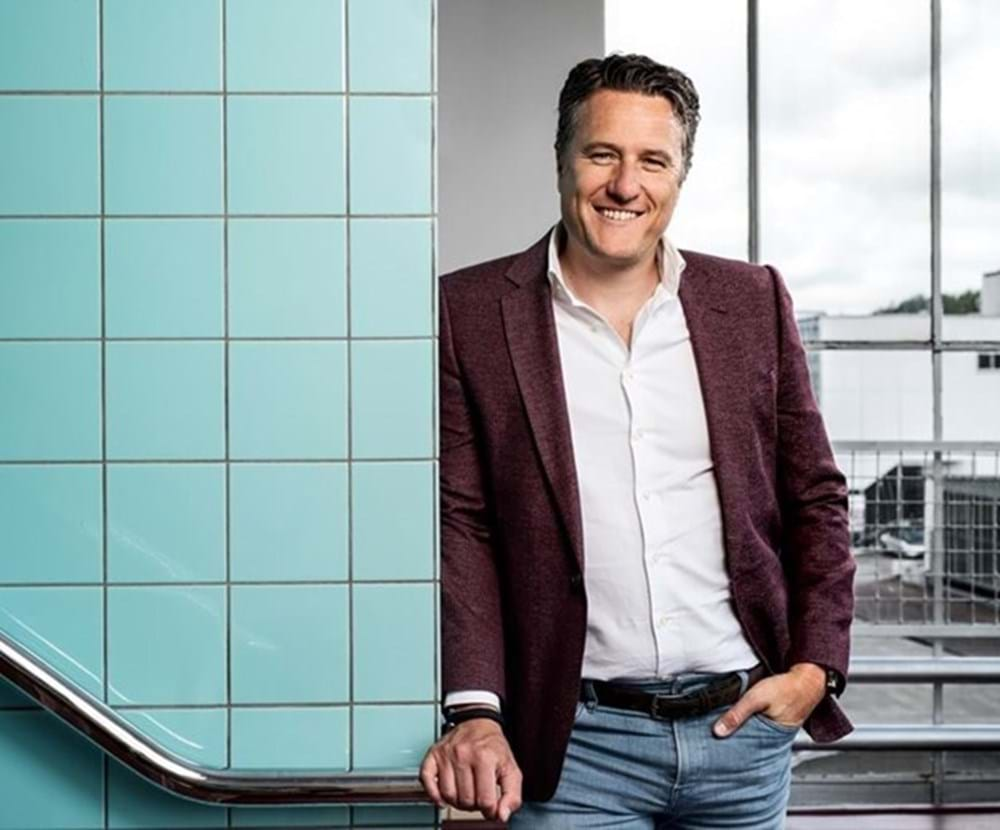Blue Radix recently won the prestigious GreenTech Innovation Award 2024 with their advanced AI system: integrated autonomous climate and irrigation control. This system, an improvement of the already successful Crop Controller, enables growers to manage their greenhouses more efficiently and sustainably. In this interview, we speak with Ronald Hoek, CEO of Blue Radix , about the developments, challenges and future vision of autonomous growing.
The first question comes from Anja Dieleman (senior researcher at WUR), with whom we spoke last time: “How can the research of a company like yours support developments towards autonomous cultivation control?”
Ronald: “A fun fact is that we originate from AgroEnergy, part of Eneco, focused on greenhouse horticulture. In 2017-2018, we looked at applying algorithms in greenhouses, not only for energy, but also for cultivation. This led us to the very first Autonomous Greenhouse Challenge of Wageningen University. This was an international challenge in which teams had to demonstrate that they could achieve good cultivation results without human intervention. This initiative and the subsequent collaboration with universities such as Wageningen and TU Delft have taught us a lot about sensors, data protocols and the practical application of AI in cultivation. Although the production and research greenhouses have different speeds, the insights from the research remain of great value to us.”
Crop Controller reduces climate computer work by 80% and significantly improves profit, yield and resource use. What inspired Blue Radix to develop Crop Controller?
Ronald: “It all started with our experience in autonomous energy control. We saw the complexity of daily energy decisions for growers and knew that AI could do a lot here. With the Autonomous Greenhouse Challenge, we saw the potential to expand this technology to crop control. The big goal was to relieve growers and tackle the shortage of experienced growers.”
“Growers have to make decisions about energy, climate, irrigation and crop protection every day. This is not only time-consuming, but also stressful, because there is more and more information and data to analyze and every wrong decision can affect the yield and quality of the crops. We wanted to offer a solution that not only analyzes and presents data, but also actually makes autonomous decisions based on that data.”
“The idea was to put the grower at the center and give them the tools to gain more control and insight, without the daily administrative burden. Our ambition was and is to support growers and future-proof the sector by implementing AI-driven technologies that are both sustainable and efficient.”

What improvements do growers using Crop Controller see in their cultivation results?
Ronald: “Growers see various improvements. Such as better plant quality and higher production. By controlling the climate in the greenhouse more evenly, there is less chance of mildew and the plant grows better. This results in more production than with manual control. We have seen yields increase from 2% to 7%, depending on the circumstances. In addition, we save more energy than expected, between 13% and 18%. This is because AI can control and anticipate more accurately than humans, which leads to less energy consumption and more even plant growth.”
Many growers point to the improved work-life balance as a key benefit of autonomous growing. How does Crop Controller help to reduce the workload for growers and their employees?
Ronald: “Crop Controller reduces the need for growers to continuously monitor their greenhouse climate. We reduce the climate computer work by up to 80%. This means that they do not have to constantly look at their computer or phone to see if everything is going well. Growers report that they sleep better again and experience less stress. This has a positive effect on their work-life balance and makes the profession more attractive. Especially for older growers who are approaching retirement, this system offers a way to continue their work without overload.”
To what extent can autonomous cultivation contribute to the sustainability objectives of the greenhouse horticulture sector?
Ronald: “Autonomous growing contributes significantly to sustainability and this has only increased by integrating our autonomous climate control with autonomous irrigation. By controlling even more precisely, we prevent excessive use of energy and water. Our data shows that we save 15% energy and reduce water and fertilizer use by 10%. This is because AI systems such as Crop Controller continuously optimize and respond quickly to changes, minimizing waste. In addition, AI systems can adjust greenhouse climate settings much more gradually than when this is done manually. Where growers often work in fixed blocks, which can lead to inefficient peaks and troughs in energy consumption, AI ensures smoother transitions. This 'angular' control is therefore reduced, which not only saves energy but also benefits plant health because the conditions are more consistent and predictable.”
How do you see the role of the grower changing with the rise of autonomous cultivation?
Ronald: “In the future, growers will focus more on the big picture and less on daily operations. They will have more time to think about new cultivation methods, innovations and how to best grow their crops. It will become more important to be good at making data-driven decisions and understanding how AI systems work. The grower who works with autonomous cultivation, sits less behind the climate computer and works more on new strategies and technologies to improve their cultivation.”
Finally, the next candidate is Dirk Aleven from FoodVentures. What question would you like to ask him?
Ronald: “With Food Ventures, you are doing an impressive job with multiple production companies in different countries. I wonder: how do you share best practices, improvements in cultivation strategy and operation with each other? In short, how do you learn from each other within the club? How do you ensure that you are getting a little better at all locations? And of course: can AI-driven autonomous cultivation, in your opinion, contribute to structuring these improvements and ensuring consistent implementation?”